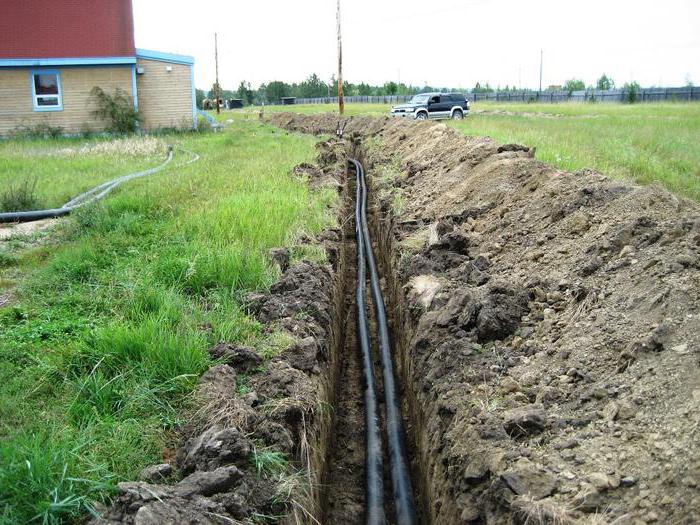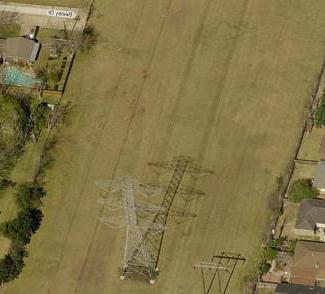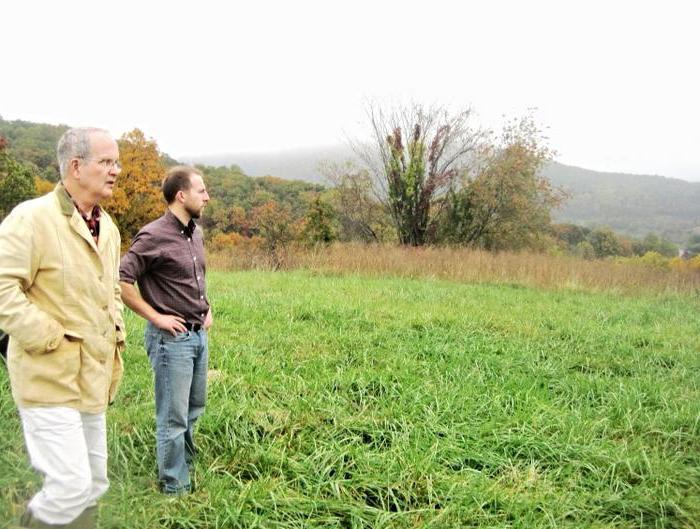Many have heard the concept of "easement on the land." What is this, however, not everyone knows. Let us further consider the basis of its occurrence and specificity. 
General information
The easement right to a land plot provides for the possibility of limited use of someone else's allotment. It can be permanent or urgent. The establishment of easement on the land is carried out by:
- Mutual expression of will of the parties.
- Court decision.
- To the law.
Moreover, it must be registered in accordance with the rules defined in regulatory enactments. An easement in relation to a land plot cannot act as an independent subject of sale or pledge. It cannot be transferred in any way to entities that are not owners of the immovable property for which it is intended to operate.
Classification
In the ZK in Art. 23 provides for a private and public easement on the land. The first is used for:
- Providing passage, passage through the adjacent allotment.
- Laying and subsequent operation of communication lines, power lines, pipelines.
- Land reclamation and water supply.
- Meet other needs.

Public easements are provided for in legislation or other regulatory acts of the Russian Federation, region or local government. They are necessary to ensure state and public interests. This easement on the land allows you to:
- Arrange passage or passage through the plot.
- Conduct drainage work.
- Drive and graze farm animals.
- Mow the grass.
- Use the territory for various needs, including for fishing and hunting.
- Provide easy access to the coastal line.
- Temporarily exploit the allotment for research activities.
According to general rules, citizens are free to use the territory of the forest fund, water bodies, unless otherwise specified by law. 
Agreement
The establishment of easement on a land plot is made out by an appropriate document. If there are disagreements, they shall be resolved in court. As a rule, a lawsuit is filed by an entity interested in obtaining the possibility of limited use of the allotment belonging to another person. For the operation of the territory located in the forest zone, an appropriate servitude agreement of the land plot is concluded with the authorized body. The limited use of the territory may also be provided on the basis of an act of state and local authorities or by a court decision.
Order of registration
To obtain an easement on a land plot, the interested entity must contact its owner. If the owner of the allotment has nothing against the fact that a citizen or organization will be able to use its territory in a limited mode, then the parties sign the corresponding document. From this moment on, the owner’s allotment burdens the easement on the land. The document signed by the parties must contain the consent of the owner to provide part of its territory to the other party to meet its needs. 
Usage fee
Compensation for the easement to the land plot is determined, depending on the amount of benefit that the owner of the plot could extract without his conclusion. The payment for limited use of the territory may also be affected by the purpose pursued interested party. Of no less importance is the intensity of use of the allocated part of the allotment.If it is necessary for an interested entity to arrange passage through the owner’s territory, sale expenses are also included in the compensation.
Additional terms
What else do you need to know when concluding easements on land? The sample document signed by the parties should include a section that defines the specific capabilities and responsibilities of the interested subject. It also provides for liability of the parties in case of violation of the conditions.
check in
This procedure is required. After the parties agree on all the nuances of the easement, the contract is registered in the Unified State Register. After making the necessary entries in the Unified Register, it takes effect. Accordingly, the interested party gets the opportunity to use part of the allotment of the owner in a limited mode. As a rule, registration takes 18 calendar days from the date of submission of the necessary securities to an authorized authority. 
Documents
The necessary papers for state registration are defined in Art. 28 Federal Law No. 122. The interested person submits:
- Statement of easement.
- Identity document (for a citizen), or constituent papers (for an organization). If a representative acts on behalf of the interested entity, a power of attorney is presented.
- A receipt confirming payment of the fee.
- Easement agreement, court decision or relevant regulations of municipal / federal authorities.
An encumbrance may be provided both for the whole allotment and for a specific part thereof. In the latter case, the cadastral passport is attached to the above list of documents, on which the validity area of the easement will be marked. It is allowed to provide an extract containing similar data. When establishing easement for the entire land, this document is not required. 
Termination
The easement may cease to act in the event of:
- Physical destruction put on.
- Evidence in court of the impossibility of the intended use of the site, in connection with the establishment of easement. The owner of the allotment may demand that the state or municipal power structure, by the decision of which an encumbrance occurred, redeem the allotment, compensate for the loss or provide another equivalent territory.
- The cessation of the reasons for the establishment of easement.
- Exceptions to allotment from civilian traffic.
- If the owner of the encumbered plot becomes the owner of the easement.
- Termination of the act in accordance with which the opportunity was given to use the allotment (part of it) in a limited mode.
Disputes
To establish easement often have to go to court. In this case, it is important to correctly compose a statement with the requirements. For example, the owner of the allotment along which the power line passes, goes to court with a lawsuit against the owner of communications with the requirement to conclude an easement agreement. The arbitration recognized that there was a restriction on the use of the allotment. The plaintiff's request for a fee was regarded as lawful. However, the application was refused. The decision stated that there was no norm in the legislation, according to which it would be possible to oblige the defendant to conclude an easement agreement. The owner of the allotment should go to court with a request to remove the obstacles that were created by the owner of the communications. In this case, the defendant would have to enter into an easement agreement. 
Important point
When filing a claim for the establishment of easement, it is necessary to provide strong evidence of its necessity. For example, the applicant was refused a request to provide travel to an industrial facility. Next to the building, within the boundaries of the allotment of the plaintiff, was a wasteland. However, he demanded to ensure passage through a neighboring section. However, there was no evidence that:
- Through the wasteland movement is impossible.
- Directions can only be arranged in a neighboring section, as there are no other routes.
- The allotment of the defendant has the appropriate infrastructure.
- Moving vehicles in the neighboring territory will be safe for people who are there.
Conclusion
If at the stage of discussion the interested subject cannot find common ground with the owner of the allotment, or he is refused to sign the corresponding agreement, there is an opportunity to defend his innocence in court. However, the plaintiff must convince the authorized court that he can not do without encumbrance on someone else’s territory. It is worth saying here that the court may not take into account the arguments of the parties. In fact, the decision can be made at its discretion, based on the norms of law. In any case, as a rule, in satisfying the plaintiff’s application, the court seeks to ensure that the result is not very burdensome for the defendant. If the parties to the relationship cannot agree on the issue of the amount of payment for the use of the allotment (part thereof) in a limited mode, a special examination is appointed. In general, as practice shows, citizens who are owners of neighboring plots do without going to court. Disputes mainly arise between organizations and individuals.
